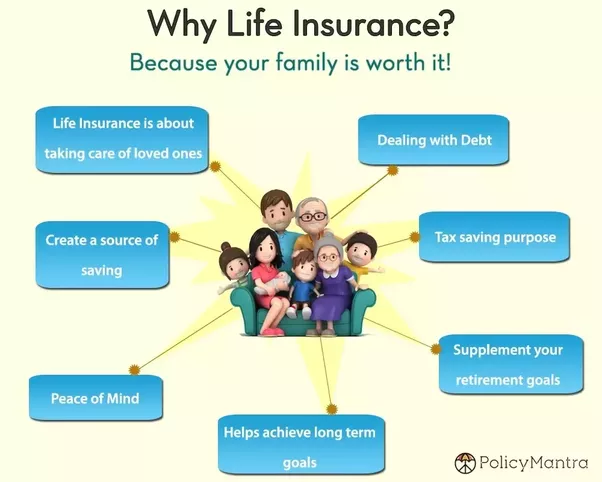Everything about Pacific Prime
Everything about Pacific Prime
Blog Article
Some Known Questions About Pacific Prime.
Table of ContentsFascination About Pacific PrimeThe Main Principles Of Pacific Prime The Best Strategy To Use For Pacific PrimePacific Prime Fundamentals ExplainedThe Definitive Guide for Pacific Prime

This is since the information were gathered for a duration of strong financial performance. Of the estimated 42 million people that were uninsured, almost regarding 420,000 (about 1 percent) were under 65 years of age, the age at which most Americans come to be qualified for Medicare; 32 million were grownups in between ages 18 and 65, around 19 percent of all adults in this age group; and 10 million were youngsters under 18 years old, concerning 13.9 percent of all youngsters (Mills, 2000).
These price quotes of the variety of persons uninsured are generated from the annual March Supplement to the Current Populace Study (CPS), conducted by the Demographics Bureau. Unless otherwise noted, national quotes of individuals without medical insurance and percentages of the population with different sort of protection are based on the CPS, one of the most commonly used resource of quotes of insurance coverage and uninsurance prices.
4 Easy Facts About Pacific Prime Shown

Still, the CPS is particularly beneficial due to the fact that it produces yearly quotes relatively rapidly, reporting the previous year's insurance coverage approximates each September, and due to the fact that it is the basis for a constant set of quotes for even more than 20 years, permitting analysis of patterns in coverage in time. For these reasons, as well as the substantial use the CPS in other researches of insurance coverage that exist in this record, we depend on CPS price quotes, with constraints kept in mind.

The price quote of the number of uninsured individuals expands when a populace's insurance policy status is tracked for several years. Over a three-year period starting early in 1993, 72 million people, 29 percent of the U.S. https://www.webtoolhub.com/profile.aspx?user=42386420. populace, were without protection for a minimum of one month. Within a single year (1994 ), 53 million people experienced a minimum of a month without protection (Bennefield, 1998a)
Six out of every ten uninsured grownups are themselves used. Although functioning does improve the chance that one and one's household members will certainly have insurance policy, it is not an assurance. Even members of family members with two full-time breadwinner have almost a one-in-ten chance of being uninsured (9.1 percent without insurance price) (Hoffman and Pohl, 2000).
The smart Trick of Pacific Prime That Nobody is Talking About
New immigrants account for a significant proportion of individuals without health insurance coverage. One evaluation has attributed a significant portion of the recent growth in the size of the U.S. without insurance populace to immigrants who showed up in the nation between 1994 and 1998 (Camarota and Edwards, 2000). Recent immigrants (those who involved the USA within the previous four years) do have a high rate of being uninsured (46 percent), but they and their children account for simply 6 percent of those without insurance across the country (Holahan et al., 2001).
The partnership between medical insurance and access to care is well established, as documented later in this phase. The connection in between health insurance and wellness results is neither straight nor simple, a considerable i was reading this medical and health solutions study literary works web links wellness insurance policy coverage to improved access to care, far better high quality, and boosted personal and population health and wellness condition.
Levels of analysis for analyzing the impacts of uninsurance. It concentrates specifically on those without any type of health insurance coverage for any length of time.
Getting The Pacific Prime To Work
The problems dealt with by the underinsured are in some areas comparable to those faced by the uninsured, although they are normally less severe. group insurance plans. Uninsurance and underinsurance, nevertheless, entail definitely different policy concerns, and the strategies for addressing them may vary. Throughout this research study and the five records to comply with, the primary focus is on individuals with no medical insurance and thus no aid in spending for wellness care beyond what is readily available with charity and safeguard organizations
Health insurance is an effective variable affecting receipt of care because both clients and medical professionals react to the out-of-pocket cost of services - https://fliphtml5.com/homepage/odsej/pacificpr1me/. Wellness insurance coverage, however, is neither essential nor adequate to access to clinical services. However, the independent and direct effect of health and wellness insurance policy protection on accessibility to health services is well established.
Others will obtain the healthcare they require even without medical insurance, by paying for it expense or seeking it from carriers that offer care complimentary or at highly subsidized rates. For still others, wellness insurance coverage alone does not ensure receipt of treatment as a result of other nonfinancial obstacles, such as a lack of healthcare carriers in their community, restricted access to transportation, illiteracy, or etymological and cultural differences.
Rumored Buzz on Pacific Prime
Official research regarding uninsured populaces in the USA dates to the late 1920s and very early 1930s when the Committee on the Price of Medical Treatment produced a collection of reports about financing doctor office check outs and hospitalizations. This issue became salient as the varieties of clinically indigent climbed during the Great Anxiety.
Report this page